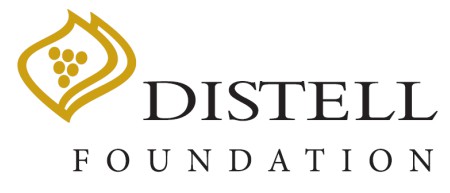Distell Foundation integrated communication strategy


Strategy consulting: Integrated communication strategy for the Distell Foundation
In 2012, Distell commissioned Stone to develop a fully integrated communication strategy for its separate social development entity, the Distell Foundation. The communication strategy was Stone’s first project for Distell, and upon the success and uptake of the strategy, several future projects flowed from the initial strategy, including change management strategies, internal engagement videos, as well as CSI leverage.
Client profile and challenge at hand
The Distell Foundation is an umbrella body for Distell’s corporate citizenship activities. The Foundation invests in communities where Distell has a visible presence, in the key focus areas of arts and culture and education and skills development, linked to job creation. Many of the Foundation’s projects and initiatives featured at the historic Oude Libertas community and arts centre, which also acted as its head office.
The Distell Foundation had difficulty communicating its vision and mission to internal and external stakeholders, and thus very low understanding levels and awareness existed amongst all audiences. This was particularly the case with Government and community relationships – who the Foundation viewed as key stakeholders. Internally, there was a lack of CSI understanding amongst senior Distell management, while – adding to the challenge – those who did understand the Foundation’s purpose, held varying views about the quality and effectiveness of relationships and thus were not on the same page.
From a reputation management perspective, the issues of irresponsible drinking were a big community challenge and directly linked to Distell products, while social investment into arts and culture could easily be misinterpreted or disregarded in a society with real social needs.
Feedback and surveys indicated an urgent and critical need for significantly improved communication. The Foundation’s dual problem of low internal and external understanding, coupled with the challenges related to public perceptions, required a distinct, integrated communication strategy.
Stone’s approach to meeting the need
Stone tapped into its extensive experience and knowledge in communication strategy to develop and adopt a clear communication strategy and roll-out plan for the Distell Foundation. We conducted a comprehensive situation analysis to identify the environmental context in which the Foundation functioned, analysed trends and resources, completed a SWOT analysis and conducted online survey research, desk preparation and document review research to serve as basis for the strategy.
Stone used its three-cluster audience map to unpack, in detail, the Foundation’s influencer, growth and effectiveness audiences. Using the SWOT analysis as framework, Stone identified four key message clusters to guide the Foundation’s future communication: proactive messages (benchmarking strengths against opportunities), reactive messages (strengths set against threats), vulnerability messages (weaknesses set against threats to determine where the Foundation is vulnerable) and temptation messages (weaknesses set against opportunities to mitigate temptation).
Following the key message development, Stone completed communication channel matching, to match the most appropriate communication channels to each target audience. Once we identified the key messages, we tailored it for the target audience, and to the requirements of the channel.
Results achieved and value added for the Distell Foundation
By applying Stone’s renowned Pebble Ring Thinking© Methodology, Stone crafted a comprehensive communication strategy to position Distell as a socially responsible company that gives back to the community. The Foundation adopted the strategy to increase awareness and understanding, mainly amongst internal audiences and Government and community stakeholders.
Stone’s proposed interventions set out in the implementation plan succeeded in achieving greater collaboration between Government and Distell in respect of its main CSI programmes. The Foundation also managed to utilise its Responsible Enjoyment of Alcohol Programme to enhance the link between education and alcohol-abuse-prevention, especially amongst vulnerable groups. The client’s feedback was hugely positive, stating that the communication strategy was fully aligned with the Foundation’s need and gave very clear direction to its future communication activities.






